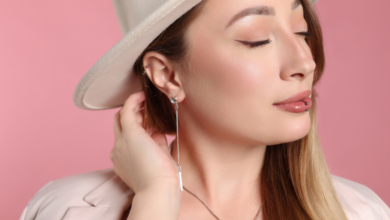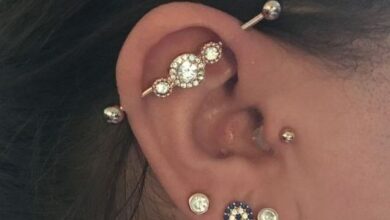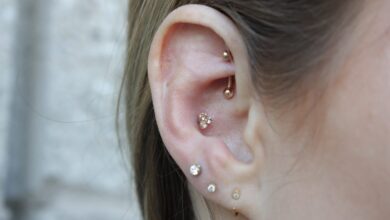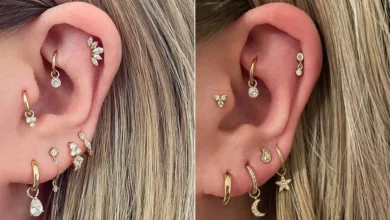
In this article, you’ll learn everything you need to know about septum piercings. You’ll find out what a septum piercing is and where it’s usually placed. We’ll also discuss the cost and materials used for septum jewelry, as well as the different types of jewelry available. You’ll discover the pain level and healing time involved, as well as the proper aftercare for a septum piercing. Lastly, we’ll touch on potential side effects and when it’s safe to change out the jewelry.
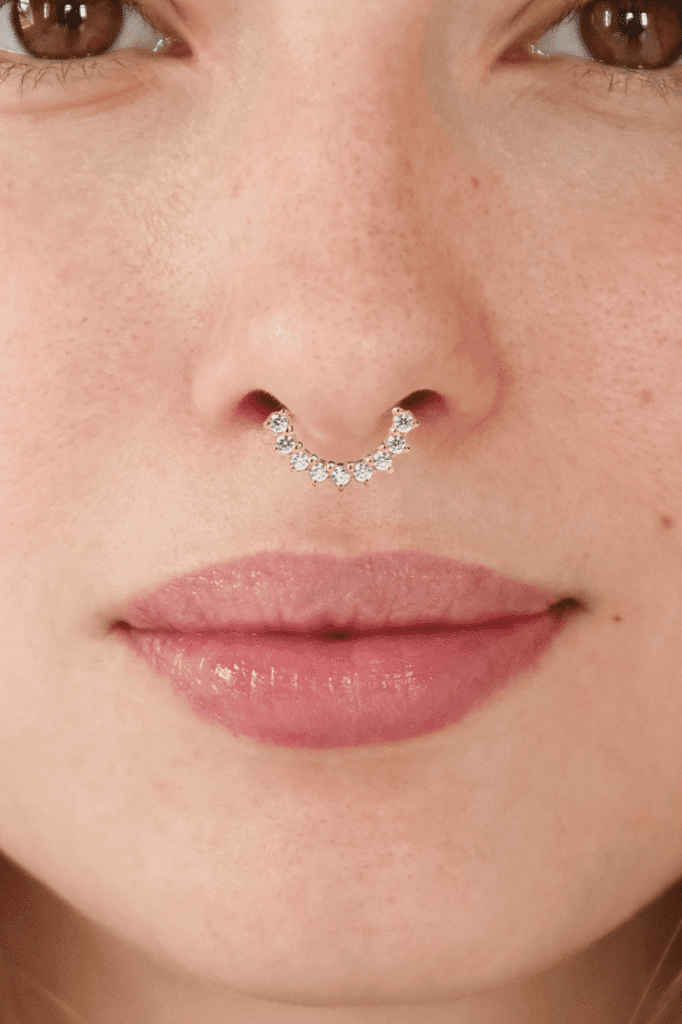
Septum Piercing
A septum piercing is a type of nose piercing that goes through the septum, which is the thin wall of cartilage that separates the nostrils. This particular piercing has gained popularity in recent years due to its unique and edgy appearance. If you’re considering getting a septum piercing, it’s important to understand everything about the procedure, aftercare, and potential side effects. In this article, we will cover all the essential information you need to know before getting a septum piercing.
Definition and Purpose of Septum Piercing
A septum piercing is a type of body modification that involves puncturing the septum to allow for the insertion of jewelry. This piercing has been practiced by various cultures throughout history for cultural, religious, and aesthetic reasons. In modern times, septum piercings have become a popular fashion statement, allowing individuals to express their individuality and personal style.
Placement of Septum Piercing

The placement of a septum piercing is crucial for both the aesthetic appeal and the comfort of the wearer. The piercing is typically done in the “sweet spot” just below the cartilage, rather than going through the cartilage itself. This placement allows for easy healing and flexibility of jewelry options. It’s important to choose a skilled and experienced piercer to ensure proper placement of the septum piercing.
Cost of Septum Piercing
The cost of a septum piercing can vary depending on several factors, including the location, reputation of the piercing studio, and the expertise of the piercer. On average, a septum piercing can cost around $40 to $100. This price usually includes the cost of the piercing itself as well as the initial jewelry. It’s essential to prioritize quality and safety when choosing a piercer rather than solely focusing on cost.

Materials Used for Septum Jewelry
When it comes to septum jewelry, it’s crucial to choose materials that are hypoallergenic and safe for long-term wear. Common materials used for septum jewelry are stainless steel, titanium, and niobium. These materials are known for their durability, resistance to corrosion, and hypoallergenic properties. It’s important to avoid materials such as nickel, as they can cause allergic reactions and other complications.
Types of Jewelry for Septum Piercing
Septum piercings offer a variety of jewelry options to suit different styles and preferences. Some popular types of jewelry for septum piercings include:
- Septum clickers: These are horseshoe-shaped rings with a hinged closure, making them easy to insert and remove.
- Circular barbells: These are circular rings with threaded ends that can be screwed on and off. They provide a sleek and minimalist look.
- Seamless rings: These rings have a smooth, continuous loop without any visible opening or interruption. They create a seamless and elegant appearance.
- Retainers: These are small, discreet pieces of jewelry made from clear, flexible materials. They are often used during the healing process or for occasions that require a more subtle look.
The choice of jewelry ultimately depends on personal style, comfort, and the overall look you want to achieve with your septum piercing.
Procedure and Pain Level
Piercing Procedure
Before getting a septum piercing, it’s essential to understand the piercing procedure and what to expect during the process. Here is a step-by-step guide to the septum piercing procedure:
- Cleaning the area: The piercer will clean the area around your septum using an antiseptic solution to ensure a sterile environment.
- Marking the spot: The piercer will mark the desired placement on your septum using a small pen or surgical marker. This step allows you to visualize the piercing before it’s done.
- Inserting the needle: Using a hollow needle, the piercer will carefully puncture the septum, creating a hole for the jewelry to be inserted. The needle is typically inserted into the “sweet spot” just below the cartilage.
- Jewelry insertion: Once the hole is made, the piercer will swiftly insert the jewelry of your choice into the piercing. They will secure it in place, ensuring the jewelry is positioned correctly.
- Aftercare instructions: After the piercing is complete, the piercer will provide you with detailed aftercare instructions to promote proper healing and minimize the risk of complications.
Sweet Spot Location
The “sweet spot” location is essential for a successful and comfortable septum piercing. This area is located just below the cartilage, where the tissue is thinner and more flexible. Piercing through the cartilage itself can be more painful and increase the healing time.
When choosing a piercer, make sure they are experienced in finding the sweet spot and have a good understanding of the anatomy of the nose. Proper placement is crucial for the overall comfort and longevity of your septum piercing.
Pain Level of Septum Piercing
One of the most common questions people have before getting a septum piercing is about the pain level involved. While pain tolerance can vary from person to person, the general consensus is that the pain level of a septum piercing is manageable and short-lived.
Most people describe the sensation during the piercing as a quick, sharp pain followed by a warm feeling. The pain is typically over within seconds. The level of pain experienced may also depend on individual factors such as anxiety levels and overall pain tolerance.
It’s essential to communicate openly with your piercer and let them know if you’re feeling uncomfortable or anxious. A skilled piercer can help alleviate any concerns and make the process as smooth as possible.
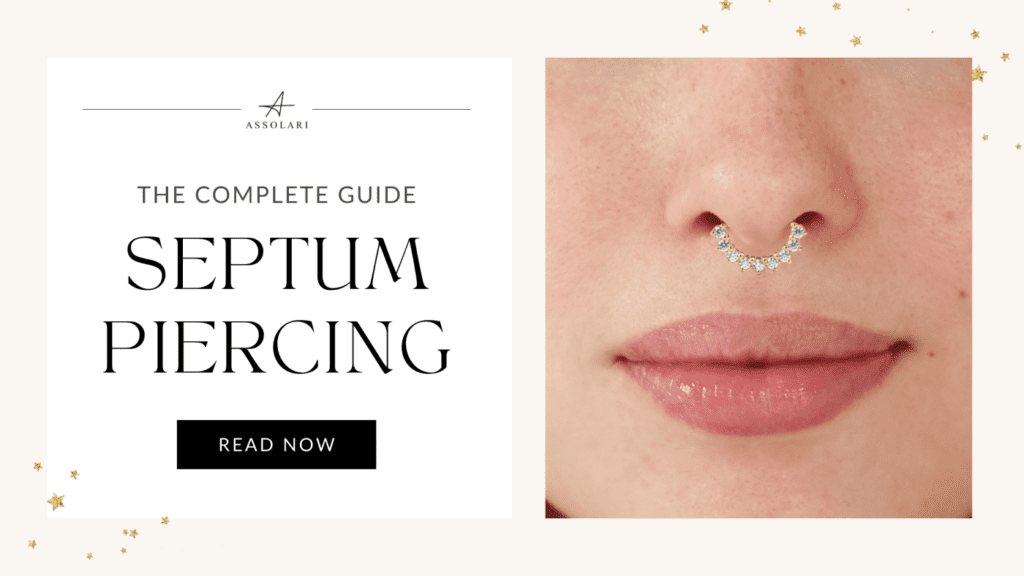
Healing and Aftercare
Healing Time for Septum Piercing
The healing time for a septum piercing can vary from person to person. On average, it takes around four to six months for the initial healing process. However, it’s important to understand that complete healing can take up to a year or more. The healing time can be influenced by various factors such as individual healing abilities, lifestyle, and aftercare practices.
During the healing process, it’s crucial to be patient and diligent with your aftercare routine. Avoid touching or twisting the piercing, as this can introduce bacteria and delay the healing process. It’s also important to follow proper aftercare instructions provided by your piercer to minimize the risk of infection and other complications.
Scar Tissue Strength
After a septum piercing has fully healed, scar tissue may form around the piercing site. This scar tissue is a natural part of the healing process and can contribute to the stability and strength of the piercing. However, it’s essential to note that the strength of scar tissue can vary from person to person.
In some cases, scar tissue can be quite strong and provide additional support for the piercing. However, it’s important to avoid excessive strain or trauma to the piercing, as it can cause the scar tissue to weaken or even break. Treat your septum piercing with care and avoid rough handling or pulling on the jewelry to ensure the longevity of your piercing.
Aftercare Routine for Septum Piercing
Proper aftercare is crucial for the healing and maintenance of your septum piercing. Here are some key aftercare practices to follow:
- Saline solution soaks: Prepare a saline solution using non-iodized sea salt and warm distilled water. Soak a clean cotton ball or sterile gauze in the solution and gently place it against your septum piercing for a few minutes. Do this twice a day to keep the piercing clean and promote healing.
- Avoid touching the piercing: It’s important to avoid touching, moving, or twisting the jewelry in your septum piercing. Touching the piercing with dirty hands can introduce bacteria and increase the risk of infection.
- Be mindful of cleaning products: Avoid using harsh or alcohol-based cleaning products near your septum piercing. These can irritate the sensitive skin and delay the healing process. Stick to mild, fragrance-free soaps when cleaning the area around your piercing.
- Avoid swimming and excessive moisture: It’s best to avoid swimming pools, hot tubs, and other bodies of water during the healing process. Chlorine and other chemicals in these environments can irritate the piercing and prolong the healing time. It’s also important to avoid excessive moisture, such as prolonged exposure to steamy showers, as it can disrupt the healing process.
Following these aftercare practices consistently and maintaining good hygiene will help ensure the proper healing and maintenance of your septum piercing.
Potential Side Effects
While septum piercings are generally safe when performed by a professional piercer and properly cared for, there are potential side effects to be aware of. These side effects can occur if the piercing becomes infected or if the jewelry causes irritation. It’s important to monitor for any signs of complications and seek appropriate medical attention if necessary.
Infection and Septum Piercing
Infection is one of the most common complications associated with piercings, including septum piercings. It can occur if bacteria enter the piercing site and multiply, leading to redness, swelling, discharge, and pain. If you suspect an infection, it’s important to seek medical attention as soon as possible.
To reduce the risk of infection, follow proper aftercare instructions, avoid touching the piercing with dirty hands, and keep the area clean. If you develop any symptoms of infection, such as persistent pain or swelling, pus-like discharge, or fever, consult a healthcare professional.
Irritation and Septum Piercing
Irritation is another potential side effect of a septum piercing. It can occur if the jewelry causes friction against the skin, leading to redness, swelling, and discomfort. Irritation is typically caused by wearing jewelry that is too tight, too heavy, or made from materials that your body may be sensitive to.
To minimize the risk of irritation, choose jewelry made from hypoallergenic materials such as stainless steel, titanium, or niobium. Avoid wearing jewelry that is too tight or heavy for your septum piercing. If you experience persistent irritation, consult your piercer or a healthcare professional for guidance.
Granulation Tissue and Scarring
In some cases, granulation tissue may form around a septum piercing. Granulation tissue is an excessive growth of tissue that can appear as a small, fleshy bump around the piercing site. While it is not necessarily harmful, granulation tissue can cause discomfort and affect the aesthetic appearance of the piercing.
If you develop granulation tissue, it’s important to consult a healthcare professional or your piercer. They can provide appropriate guidance on how to manage and treat granulation tissue to promote healing and minimize scarring.

Changing Jewelry
When to Change Septum Jewelry
Changing the jewelry of your septum piercing should be done with caution and at the appropriate time. It’s essential to allow sufficient healing time before attempting to change the jewelry. Generally, it’s recommended to wait at least a year before changing the initial jewelry to ensure proper healing and minimize the risk of complications.
Once you’ve reached the appropriate time, changing the jewelry can be done following proper hygiene practices. Make sure to thoroughly clean your hands and the new jewelry before attempting to change it. If you’re unsure or uncomfortable changing the jewelry yourself, it’s always best to consult a professional piercer for assistance.
Consulting a Piercer for First Jewelry Swap
If you’re considering changing the jewelry of your septum piercing for the first time, it’s a good idea to consult a professional piercer. A piercer can assess the healing progress of your piercing and provide guidance on suitable jewelry options. They can also ensure that the jewelry is inserted correctly and safely.
Consulting a piercer for the first jewelry swap can help minimize the risk of complications and ensure a smooth transition to new jewelry. They can also answer any questions you may have and provide recommendations based on your personal style and preferences.
Conclusion
In conclusion, a septum piercing is a unique and stylish way to express your individuality. Understanding the procedure, aftercare, and potential side effects are essential before getting a septum piercing. By following proper aftercare practices, choosing appropriate jewelry, and being mindful of potential complications, you can enjoy a well-healed and beautiful septum piercing. Find a reputable piercer, communicate your expectations, and take pride in your new septum piercing as it becomes a part of your personal style.
The Evolution Of Piercing: A Historical Perspective(Opens in a new browser tab)
Stylish.ae’s Ultimate Guide To Ear Piercings: From Lobe To Cartilage(Opens in a new browser tab)

